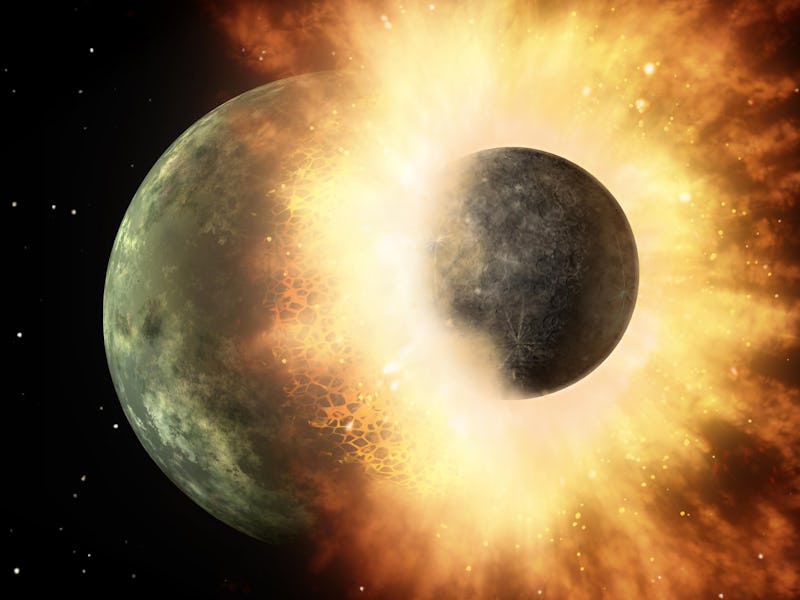Ancient Collision Vaporized Earth, Giving Birth to the Moon

New chemical analysis of Earth and moon rocks has shed fresh light on the origins of our lunar system, and the moment of birth was far more dramatic and violent than many expected.
“Our results provide the first hard evidence that the impact really did (largely) vaporize Earth,” said Kun Wang, a geochemist at Washington University in St. Louis, in a news release. A study by Wang and Stein B. Jacobsen was published online Monday in Nature.
About 4.5 billion years ago, Earth was a very young collection of space junk, and it wasn’t a terribly welcoming place. That early period is known as the Hadean eon, named as such for the hellish conditions. Proto-Earth was fiery and hot, and the surface was likely mostly molten lava from intense volcanic activity and frequent collisions with other rocks.
That’s when this early planet collided with another, perhaps the size of Mars. The force of the impact vaporized the smaller and most of the larger, resulting in a gigantic atmosphere 500 times the current size of current Earth, filled with a super-hot fluid mantle. This, over time, cooled and hardened into two distinct bodies — the moon and the Earth.
It’s long been theorized that the moon formed from a collision between two proto-planetary bodies. But earlier models had the two masses just grazing each other, with the smaller one mostly remaining intact and forming the moon. This was disproven in 2001, when scientists compared isotopes of a variety of elements in moon and Earth rocks, and found them to be compositionally the same. The chances of the two colliding bodies having the same signatures in their isotopes naturally is almost zero, which meant that the masses of the two rocks had to substantially mix together before forming the moon.
This illustration shows two competing models for the moon's formation. New research supports the second scenario, where a very violent collision vaporized most of Earth's mantle.
Two such models have been previously suggested to account for this. In one, the collision is still pretty tame, but a disc-shaped cloud of mantle atmosphere allows for the mixing of material from Earth and its proto-moon, before they settle into separate objects.
This new research rules that conclusion out, by using a very sophisticated analysis of two potassium isotopes, 10 times more precise than previous methods. It found a very slightly higher concentration of the heavier potassium isotope on the moon than on Earth. The only explanation for this is that, during the condensation of the mantle atmosphere that led to the birth of the moon, the heavier isotope was slightly more likely to condense than the lighter one.
This supports the model where the entire colliding object, and most of Earth, was obliterated in the crash, and the moon formed as particles in the superfluid mantle atmosphere cooled and came together, like a massive raindrop condensing from water vapor, slowly gaining in size.